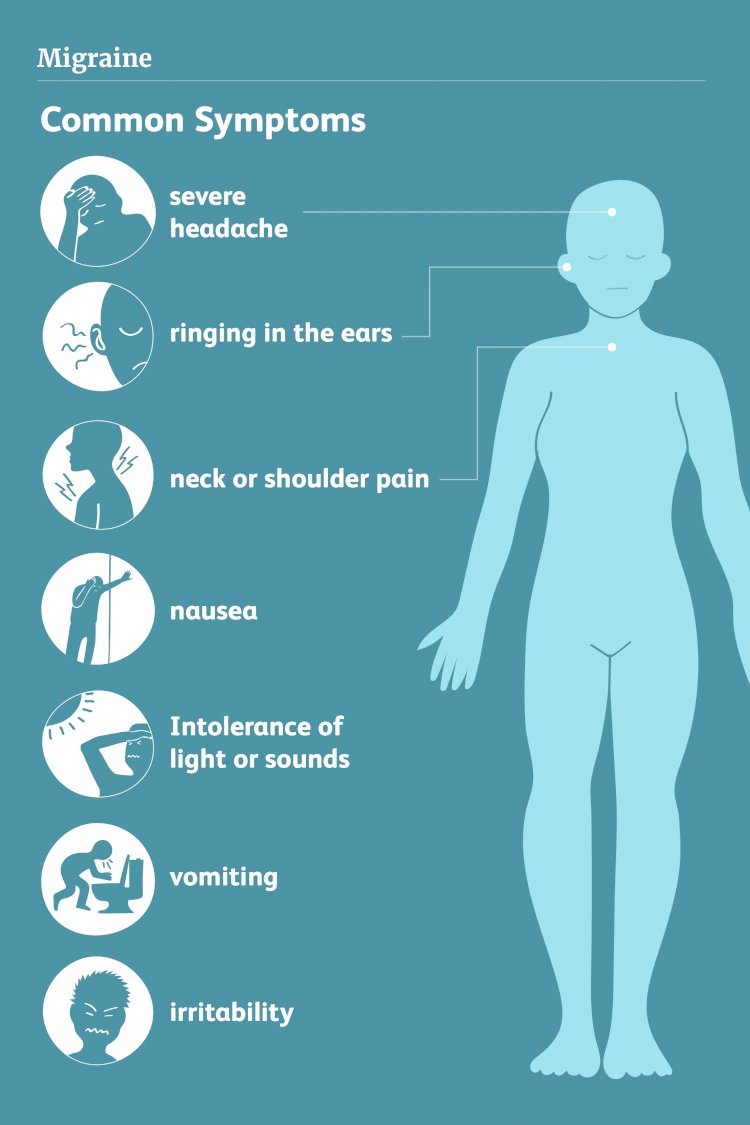What are the Signs and Symptoms of Migraine?
Migraine is more than a headache but what exactly is it? Migraine is a complex condition with a wide variety of symptoms. Learn the symptoms of Migraine headaches.

What is Migraine?
Basically, migraine is a neurological state that can cause multiple symptoms. It is frequently characterized by extreme, debilitating headaches. Symptoms may include nausea, vomiting, difficulty speaking, numbness or tingling, and sensitivity to light and sound. Migraines often run in families and influence all ages.
Migraines can initiate in childhood or may not occur until early maturity. Women are more likely to have migraines as compared to men. Family history is one of the majority of general risk factors for having migraines.
Frequent Signs and Symptoms of Migraine
Migraine installments can include various stages: prodrome, aura, headache, and postdrome. You may experience all of these four phases when you have a migraine, or you might just encounter one, two, or three of migraine stages. The headache phase is the most common phase of migraine, while the aura is the least frequent.
Prodrome
The prodrome stage is characterized by premonitory symptoms of an impending migraine and it can start a few hours or days before a migraine episode reaches its climax intensity.
Near about 60 percent to 80 percent of migraine patient experience, prodromal symptoms and mostly taking migraine prescription during this stage may prevent the scene from advancing.
Typical symptoms during a prodrome are:
- Food cravings
- Constipation or diarrhea
- Mood changes: sadness, irritability, anxiety
- Muscle stiffness or soreness, especially in the neck
- Fatigue
- Excessive yawning
- Nausea
- Fluid retention, bloating
- Increased frequency of urination
- Difficulty concentrating
- Vivid dreams
- Sensitivity to light, sounds, or smells
- Feeling cold
Aura
On the other side, approximately 20 percent of migraineurs experience aura phase of migraine, which usually follows the prodrome and lasts long for just less than an hour. This phase is characterized by neurological symptoms, and it can be quite startling, particularly when the migraineurs experience it for the very first time.
Symptoms of a migraine aura stage can include:
- Visual changes: blurry vision, flashing lights, wavy lines, spots, blind spot, blurry vision, partial loss of vision
- Tingling, numbness, or hypersensitivity of the face or extremities
- Vertigo
- Difficulty in finding words and/or speaking
- Confusion
- Partial paralysis
- Olfactory hallucinations
- Auditory hallucinations
- A decrease or loss of hearing
Headache
The headache of a migraine is often described as agonizing, throbbing, or pulsating. The patient may also experience other symptoms along with the head pain. This stage of migraine generally endures from one to 72 hours.
Common characteristics of the headache phase may incorporate:
- A hemicranial ache that can shift to the other side or become bilateral (two-sided)
- Phonophobia (sensitivity to sound)
- Photophobia (sensitivity to light)
- Nausea and vomiting
- Diarrhea or constipation
- Nasal congestion and/or runny nose
- Sadness or anxiety
- Hot flashes and chills
- Dizziness
- Dehydration or fluid retention

Postdrome
After the most severe phase of a migraine, you may encounter a postdrome before your migraine attack is totally finished.
The symptoms of postdrome may include:
- Fatigue
- Mood swings that may include unhappiness, nervousness, or elevated mood
- Muscle aches
- Dizziness or lightheadedness
- Difficulty concentrating
- Stiff neck
- Scalp tenderness
Also Read - Difference between Migraine and Headache
Childhood Migraines
It is not that the migraine is attacked by elders, even children also get migraines attacks, and the symptoms can differ from those of adults. If you note the following symptoms in your child, migraines may be the cause, especially if your child has a family history of the condition:
- Stomachache
- Nausea
- Dizziness
- Motion sickness
- Moodiness
- Excessive sleepiness
Make sure to talk about these signs and symptoms with your doctor. There could be chances of another medical condition, but if migraines are the cause, your child can take medicine to help in preventing it and treat it.








































Comments (0)